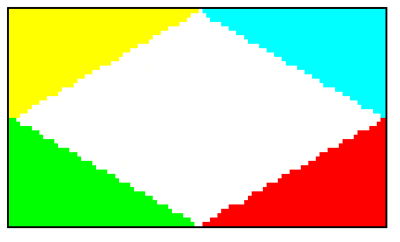3DISO: Adapting Isometric Scrolling Theory to 3D Worldspace, Part 4
February 22, 2002
by Andrew M. Phelps
Part 1 of this article discussed some of the impetus behind moving our existing isometric engine over to Shockwave 3D, and the basic theory behind scrolling games.
In Part 2 we went into the math behind scrolling, and introduced the concept of isometric landscapes.
Part 3 discussed mapping systems, where the tile grid is given a coordinate system and how that affects movement strategies..
Sample Director 8.5 movie source is available for download in ZIP or SIT archive format (both files are approximately 1.2MB). If you have Shockwave 8.5, you can view the 3DISO engine (~185K).
3 Isometric Landscapes (continued)
3.4 Screen to Map and Map to Screen
The traditional methodology of transporting screen to map and map to screen coordinate values are often hairy and somewhat annoying. The engines presented here use a somewhat modified form of the traditional isometric methods in the first (2D) iteration, and rely heavily on Shockwave 3D Lingo methods supplied for the 3D implementation, namely the modelUnderLoc and modelUnderRay commands, in #detailed mode.
In most 2D isometric engines, it becomes very difficult to determine which tile is clicked on (and thus, which corresponding map value is desired). This is solved by using a graphic similar to the one pictured in figure 17 as a lookup table on the click.

Figure 18: Color tile for mouse x/y conversion(s) in a traditional isometric tiling engine.
Copyright 1997-2025, Director Online. Article content copyright by respective authors.